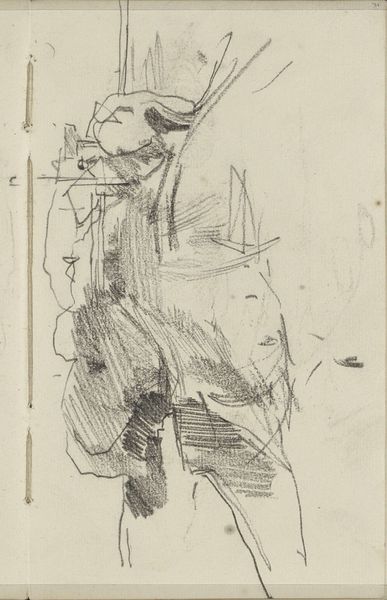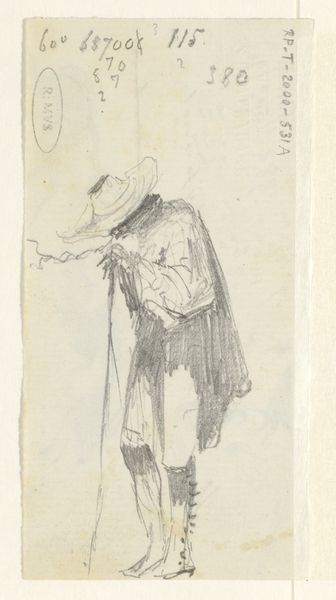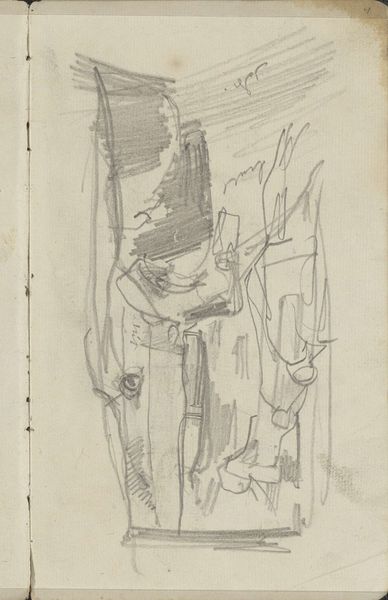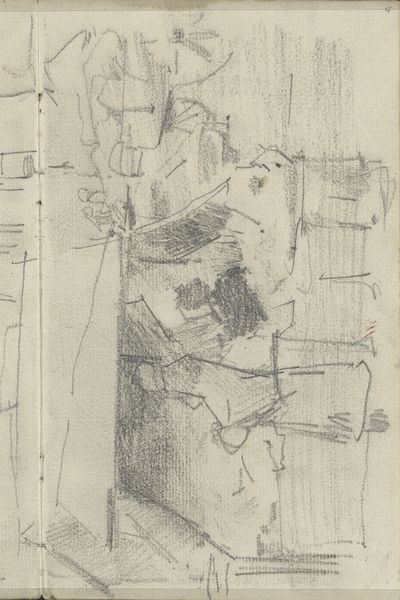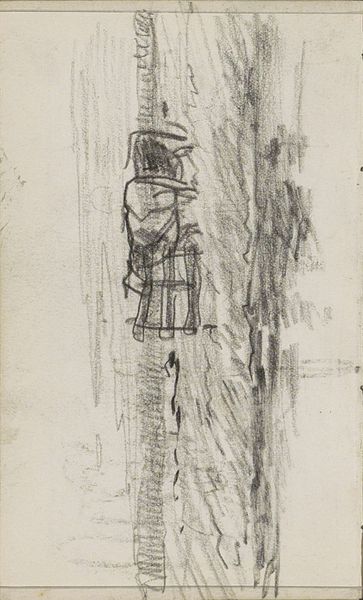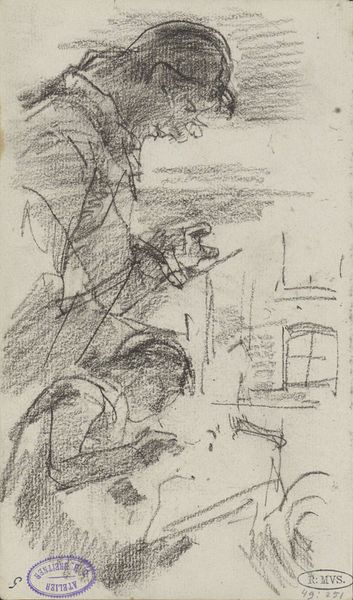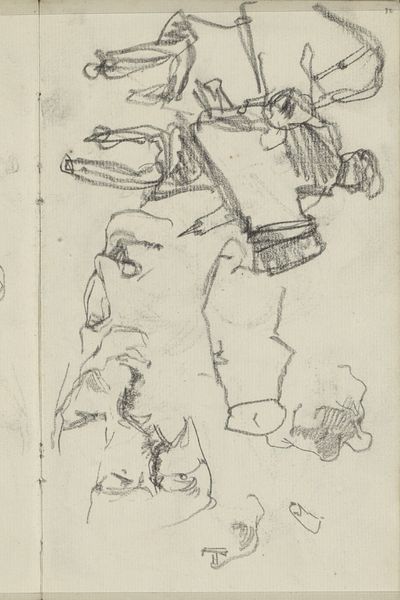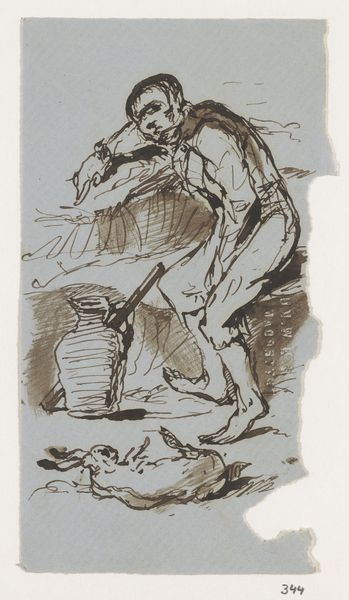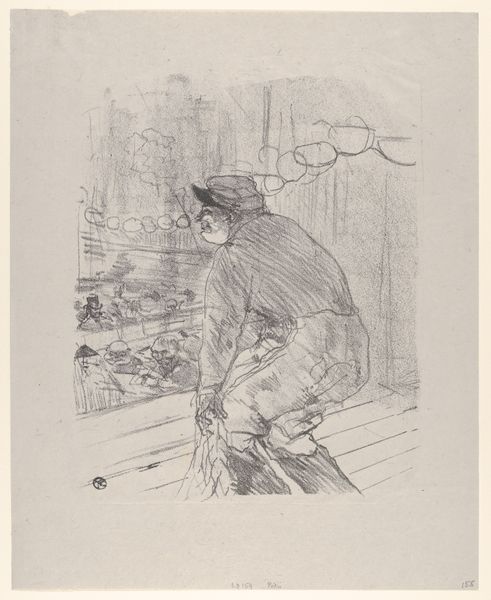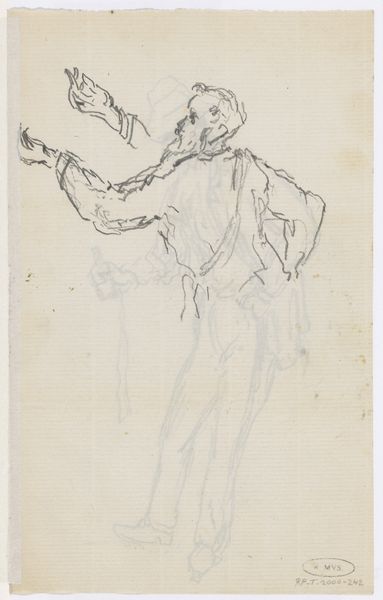
Copyright: National Gallery of Art: CC0 1.0
Editor: So, this is Henri de Toulouse-Lautrec’s "Ballade de Noël" from 1895, a pencil drawing and print. It feels…gritty. The lines are rough, and the figure looks burdened. What catches your eye in this work? Curator: The figure immediately speaks to me. He carries not just physical objects, but the weight of societal expectation, a kind of melancholic revelry, if you will. Notice how Lautrec uses the slurred and smudged medium of pencil to imply so many layers. Doesn’t his burden almost appear to consume him, as the holiday spirit seems to consume our modern lives? Editor: Absolutely. I didn’t think about the consumerism aspect initially. Is the sketchiness intentional? It seems almost unfinished. Curator: Precisely! Lautrec wasn't aiming for a polished depiction, but a visceral representation of fleeting moments and societal impressions. Think about the holidays – a time of great joy, yet often steeped in stress and a manufactured mirth. Do you think he captures a dual nature? Editor: Yes, the ambiguity really makes you think. Is that... a Christmas tree on his back? And is that a toy or a wrapped gift in front of him? Curator: Likely so. Note how it overpowers the figure. Now, consider the historical context: what anxieties or social critiques might Lautrec be subtly embedding within this seemingly simple "Ballade"? Editor: I hadn’t considered the social commentary. So it's more than just a snapshot of a man carrying things. It's a symbol for something larger. Curator: Indeed. Lautrec utilizes recognizable, shared experiences—Christmas—to deliver a pointed message, leaving the viewer questioning the true cost of the season, and for whom the ballad is truly sung. Editor: I see it now. I’ll never look at a holiday scene the same way again. Curator: Art expands our perspectives in ways both subtle and profound.
Comments
No comments
Be the first to comment and join the conversation on the ultimate creative platform.

